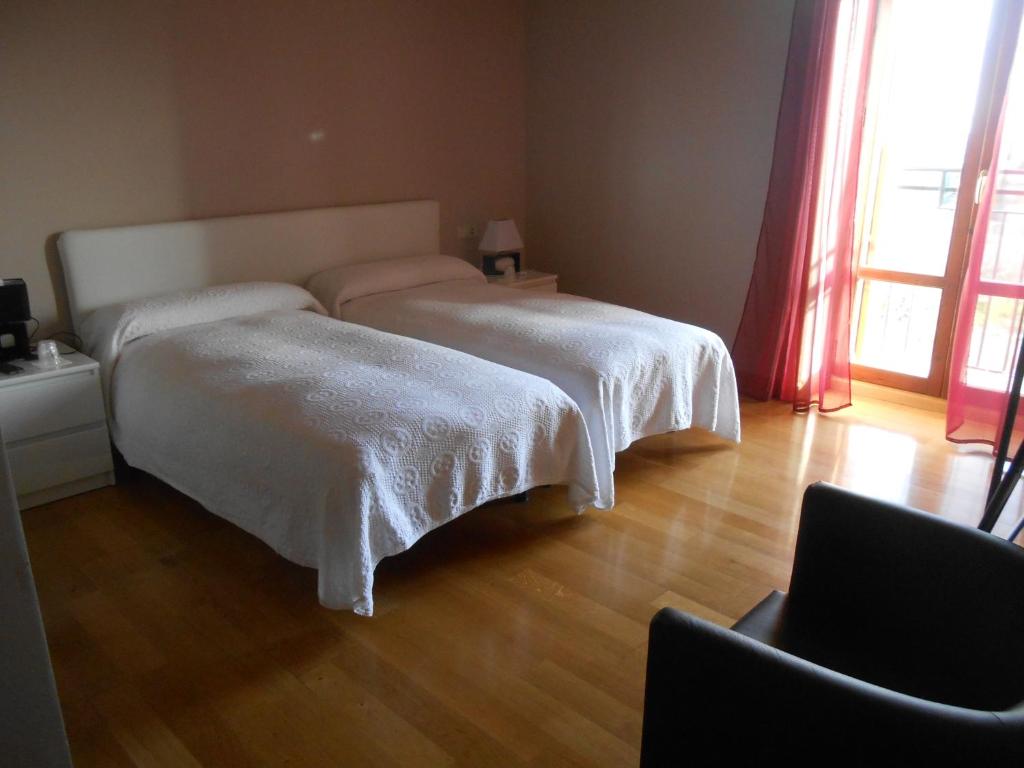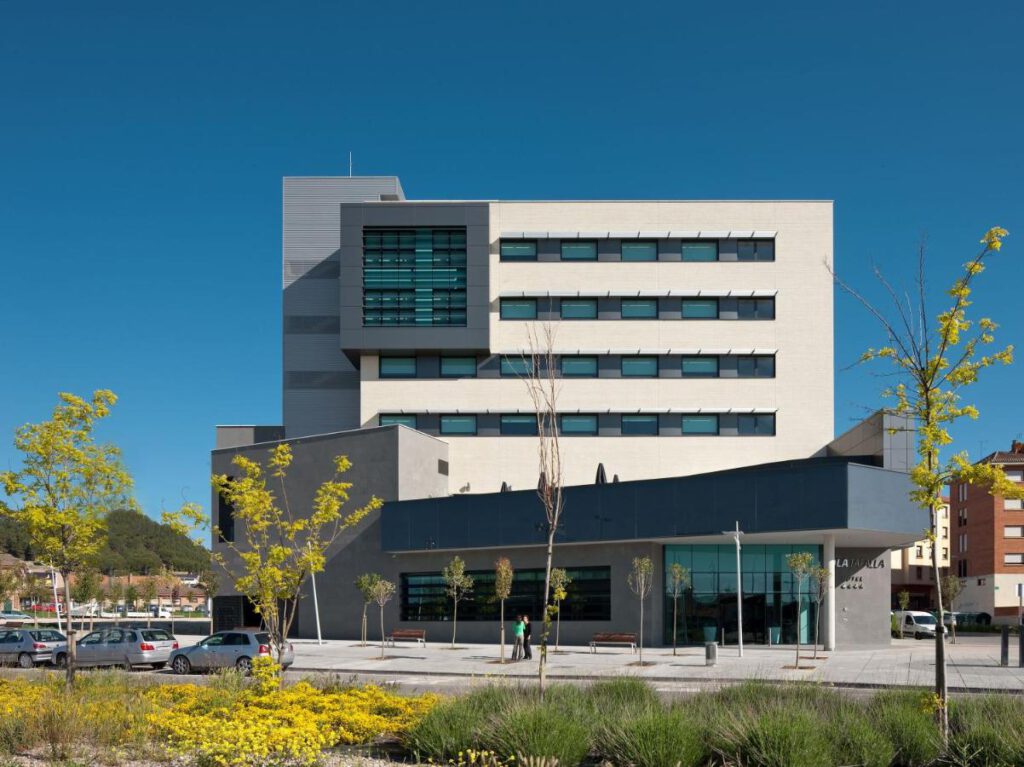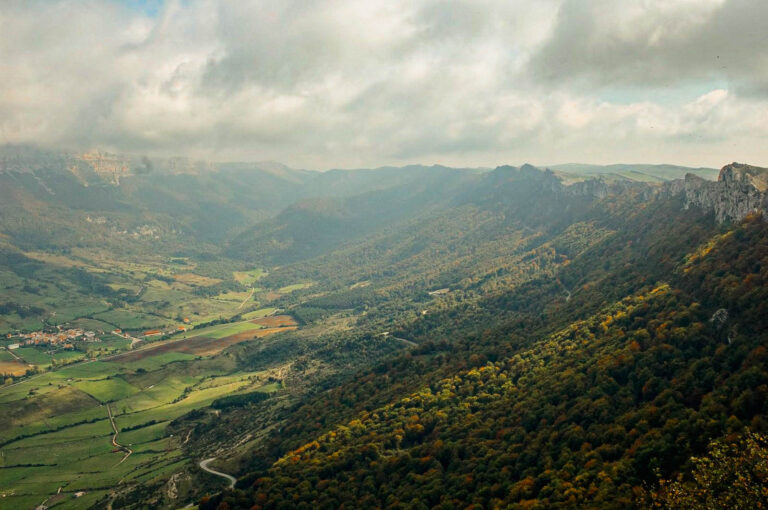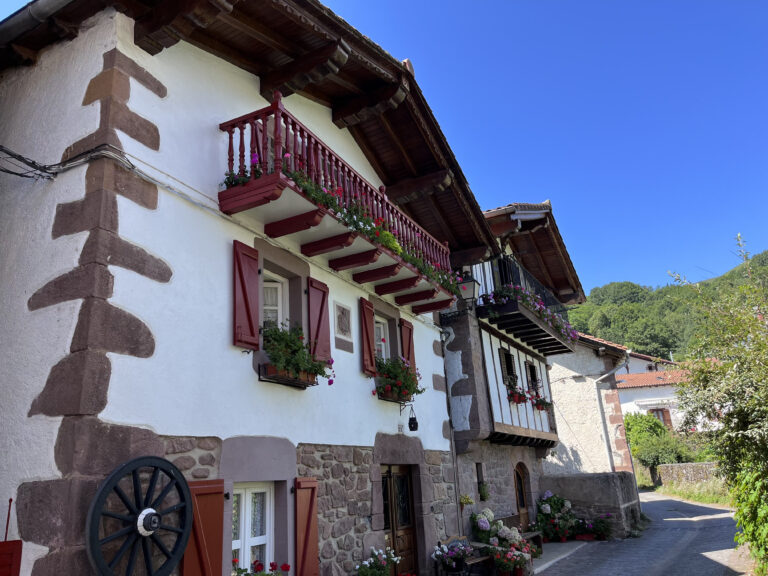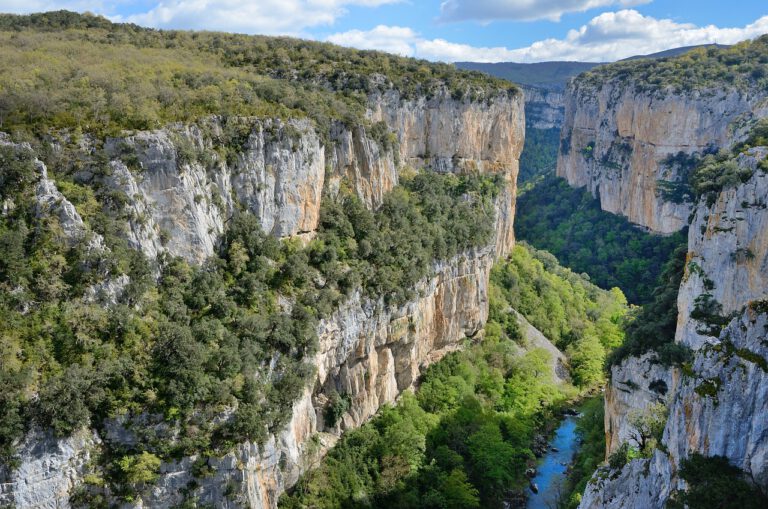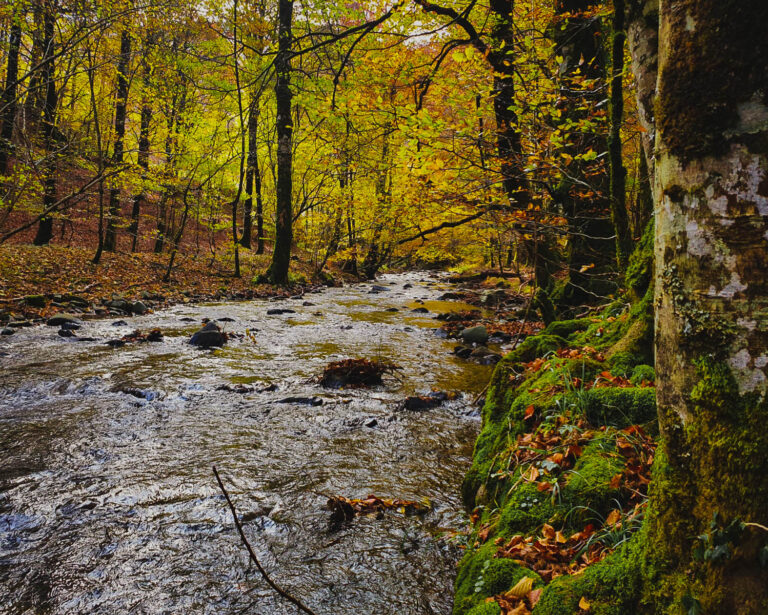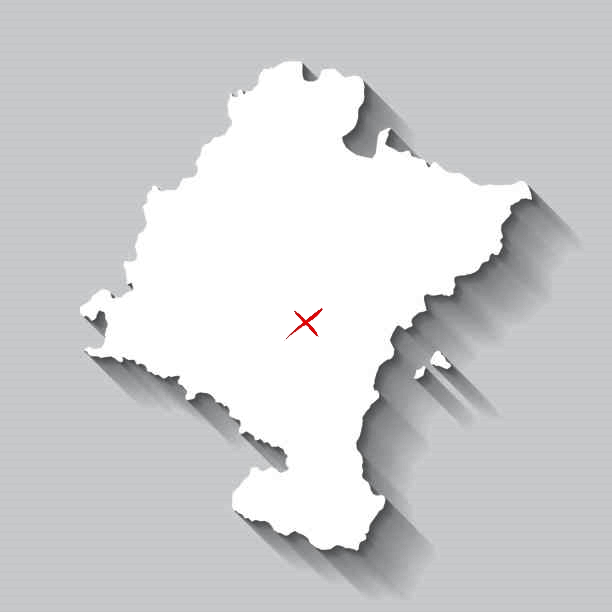Tafalla is located in the heart of Navarra, about 30 minutes from Pamplona , the capital of Navarra. It is also 10 minutes from the beautiful village of Olite . Tafalla maintains the medieval flavor in its oldest part and offers a more modern atmosphere in the center, with all kinds of shops and bars. This town is the economic center of the middle area of Navarra. Most likely, the name of this town comes from the Arabic Al-Tafaylla and it means “Where the crops begin”.
The Plaza de Francisco de Navarra is the city's central square and serves as a meeting place and stage for Tafalla's main events. The fountain, which is the symbol of the city, can also be admired in this square. In addition, this square houses the city hall, which can be seen behind the fountain.
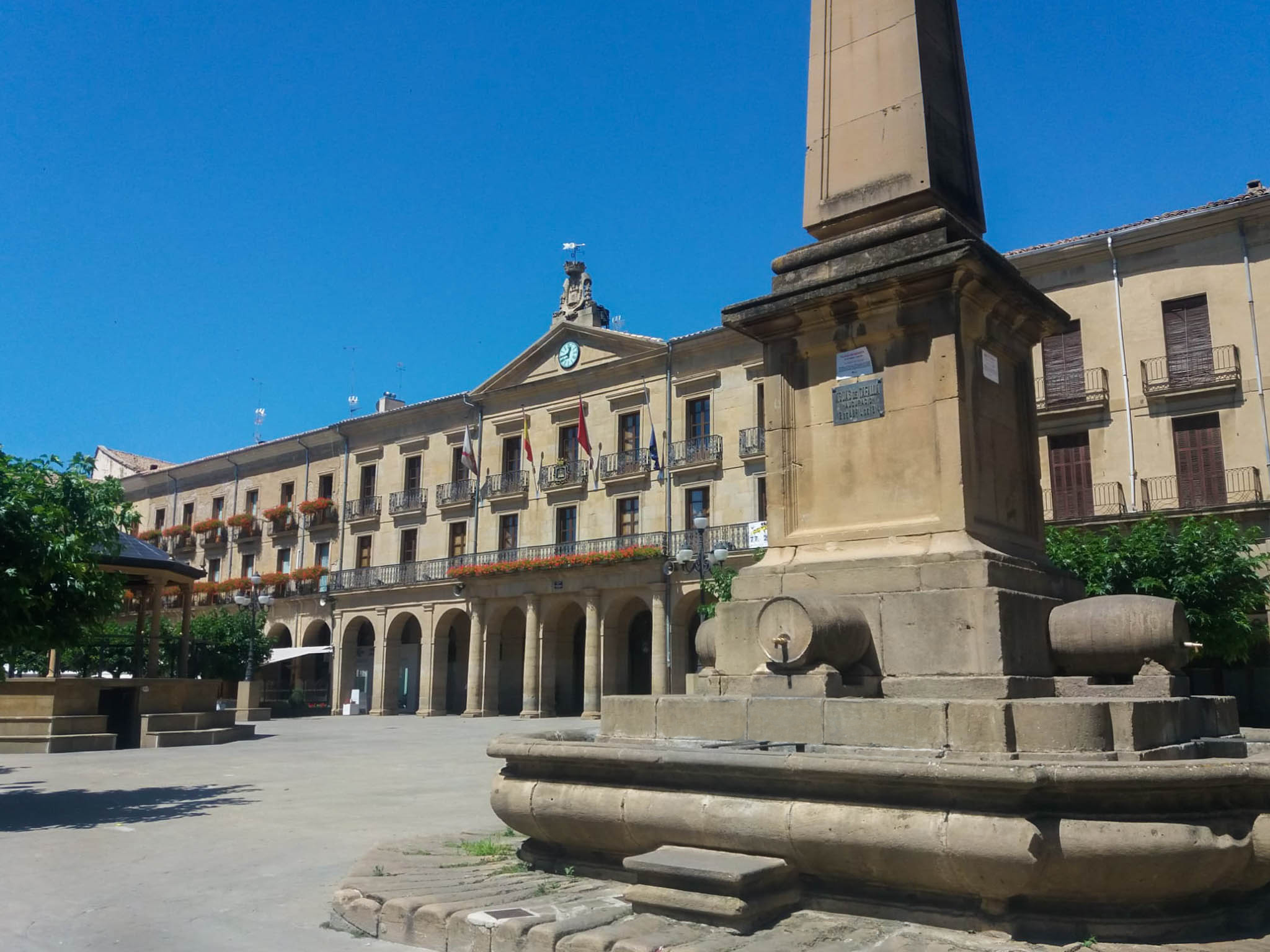
This square was part of it Royal Palace of Tafalla, which was built in the 15th century under King Charles III, also known as "the Noble". Today, this palace has completely disappeared. Through one of the gates in this square you reach one of Tafalla's liveliest spots, the popular Placeta de las Pulgas (“Square of the Fleas”). There are several terraces here and it is particularly lively on Thursdays and weekends, especially in the summer.
On summer Thursday evenings, the Juevintxo takes place. "Juev" comes from jueves (“Thursday”) and "intxo" from pintxo (“small tapa”). Many bars in the center of Tafalla offer a glass of wine or beer with a pintxo at a reduced price (€2-4) during these days.
Churches in Tafalla
In Tafalla there are two large churches: Santa María and San Pedro. The Church of Santa María is located in the highest part of the town. It is Romanesque in style, built in the 13th century with the name San Salvador and after a reform in 1556 it was renamed Santa María. In 1730 a reform was also carried out which was accompanied by an extension.
The church of San Pedro is the oldest in the city. Inside is the altarpiece of the Visitación of Gothic style, as well as others in Baroque style. There is also an altarpiece from the 16th century that was previously in the Convent of the Concepcionistas Recoletas (also in Tafalla).
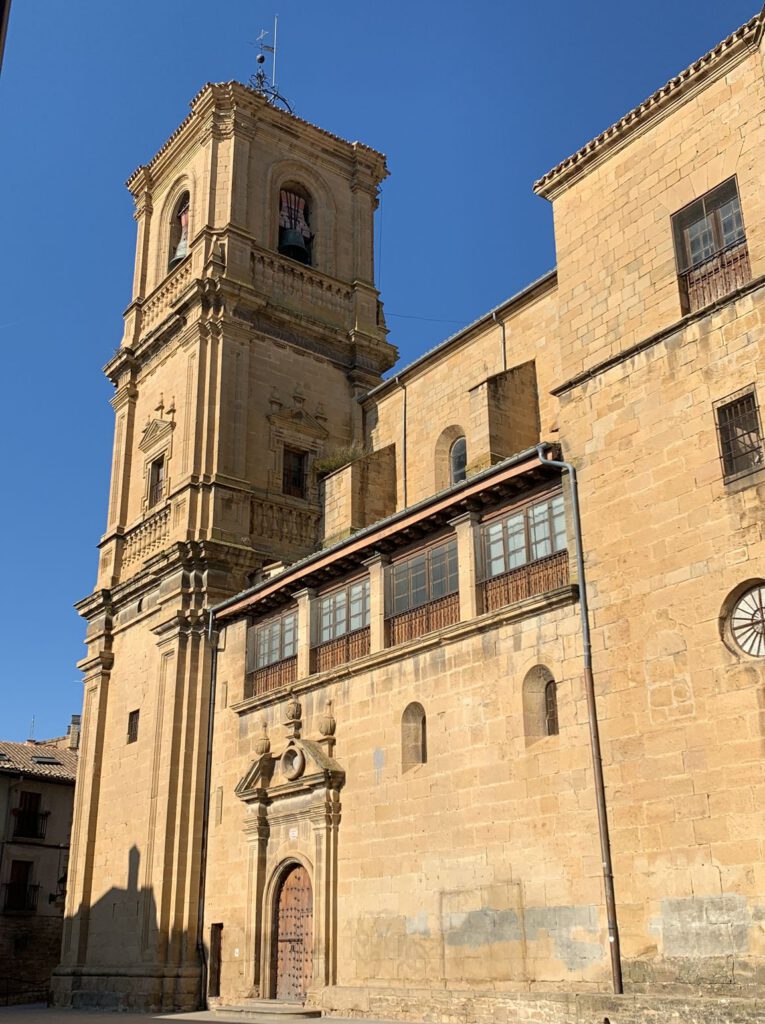

Other sights
The neighborhood of La Peña , also known as Barrio Alto (“High Neighborhood”), is the oldest part of Tafalla and has been restored in recent years. According to Arab chroniclers from the 10th century, the first inhabitants of Tafalla settled here. Walking up the streets from the church of Santa María, we reach the hill of Santa Lucía. This is where the original castle stood, which stood until the 16th century.
It later served as a stone quarry, was converted into a fortress in the 19th century and destroyed after several wars. Today it is the perfect place for a pleasant walk through the pine forest with the best panoramic views of the city and its surroundings.
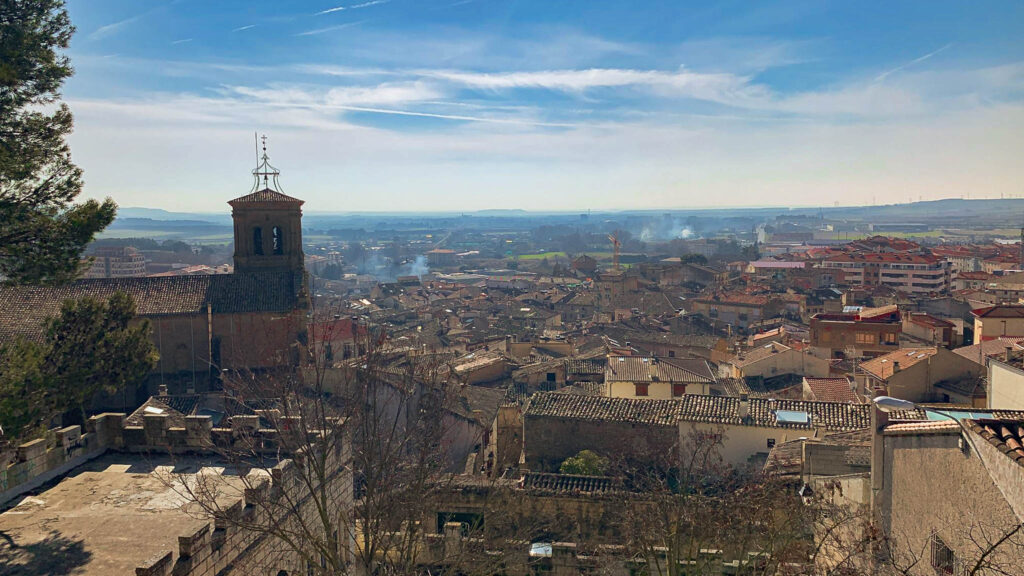
Close to the town centre and along the main road is one of Tafalla’s most famous buildings. The Convent of the Concepcionistas Recoletas was built in 1674 and is connected to the Palacio de los Mencos (“Palace of the Mencos (Family)”) by a monumental arch over the road. This palace was also built in the 17th century and is owned by the Mencos family, one of the most important families in Tafalla who first settled here in 1420.
For groups of 6 to 14 people, there is the possibility to have a guided tour of the palace in English, including a tasting of 3 local wines in the wine cellar. The cost is 10 euros per person. For more information, click here .
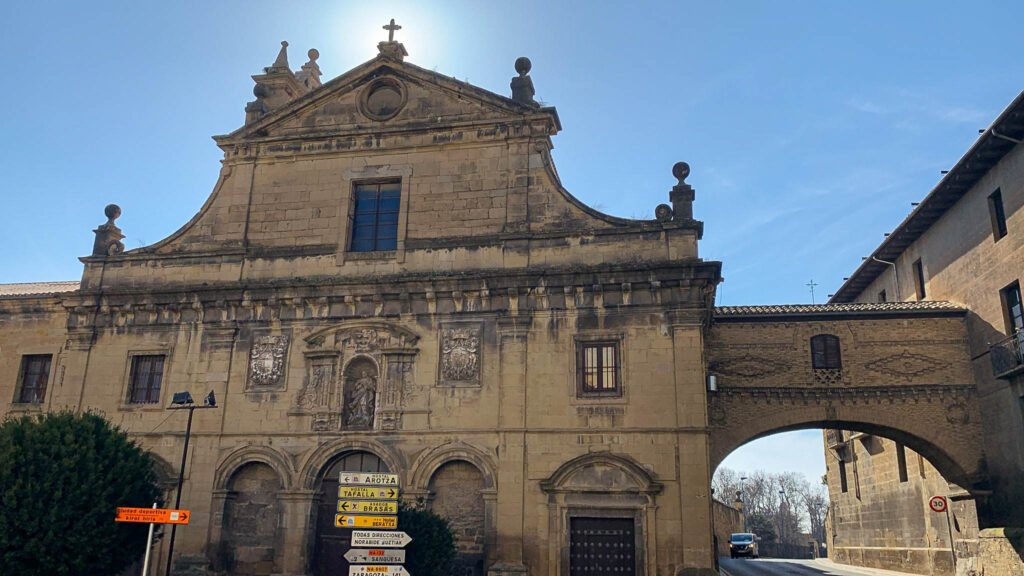
Activities in Tafalla
Every year the Tafalla celebrations start on August 14 and last until August 20. They start with the so-called chupinazo, during which a flare will be shot from the balcony of City Hall. This is followed by music, elaborate festivities and (many) drinks. Moreover, there are people on the streets throughout the day (and night).
From August 15, there will be one every morning encierro (“running of the bulls”), which attracts many people from the region and even from far beyond. During the day there is music on the streets again and plenty of festivities. Some people go to the bullfight in the late afternoon, but this is not recommended for sensitive people.

After the bullfight, vaquillas ("cows") are let loose in the bull arena every day. In the process, youngsters try to avoid these cows, sometimes by doing beautiful somersaults over them. In the evening, the Torico de Fuego ("Bull of Fire") takes place, a version of the encierro but with a fake bull. This activity is for children who run in front of the "bull". This is followed by another big party in the streets and bars of Tafalla. The Torico de Fuego is a Navarrese tradition held in several villages during village festivals, such as in Olite.
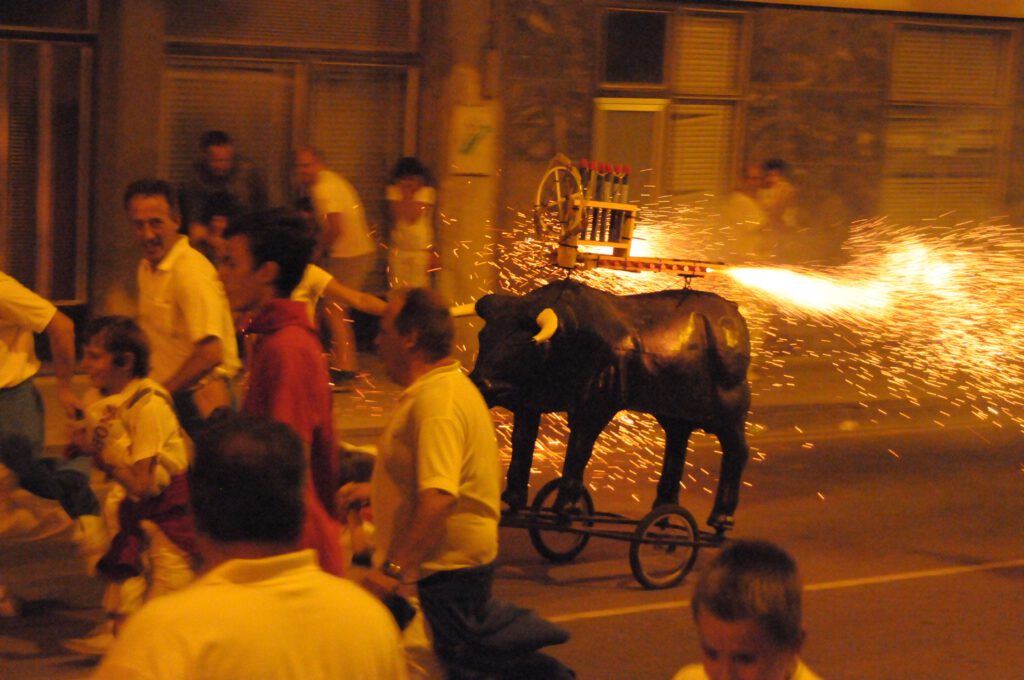
On August 17th or 18th, alongside all the festivities, the concurso de recortadores takes place. This is a competition where several professionals perform jumps and movements to avoid the bulls. It is a non-violent alternative to bullfights, where no harm is done to the bull.
During these festivities, people traditionally wear white and red clothing, as is customary in Navarra. One could consider this as a smaller-scale version of San Fermín, the biggest festival in Navarra, which takes place in Pamplona.

